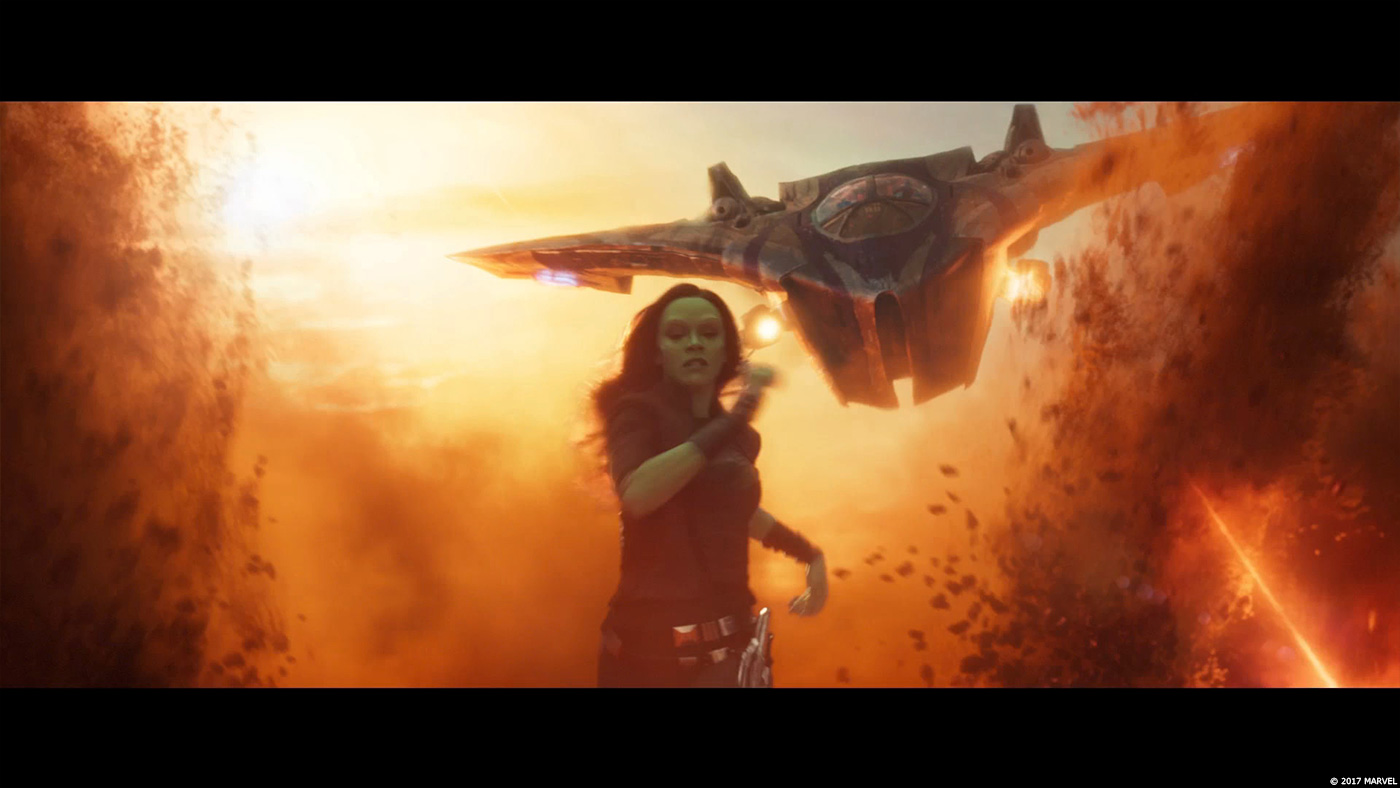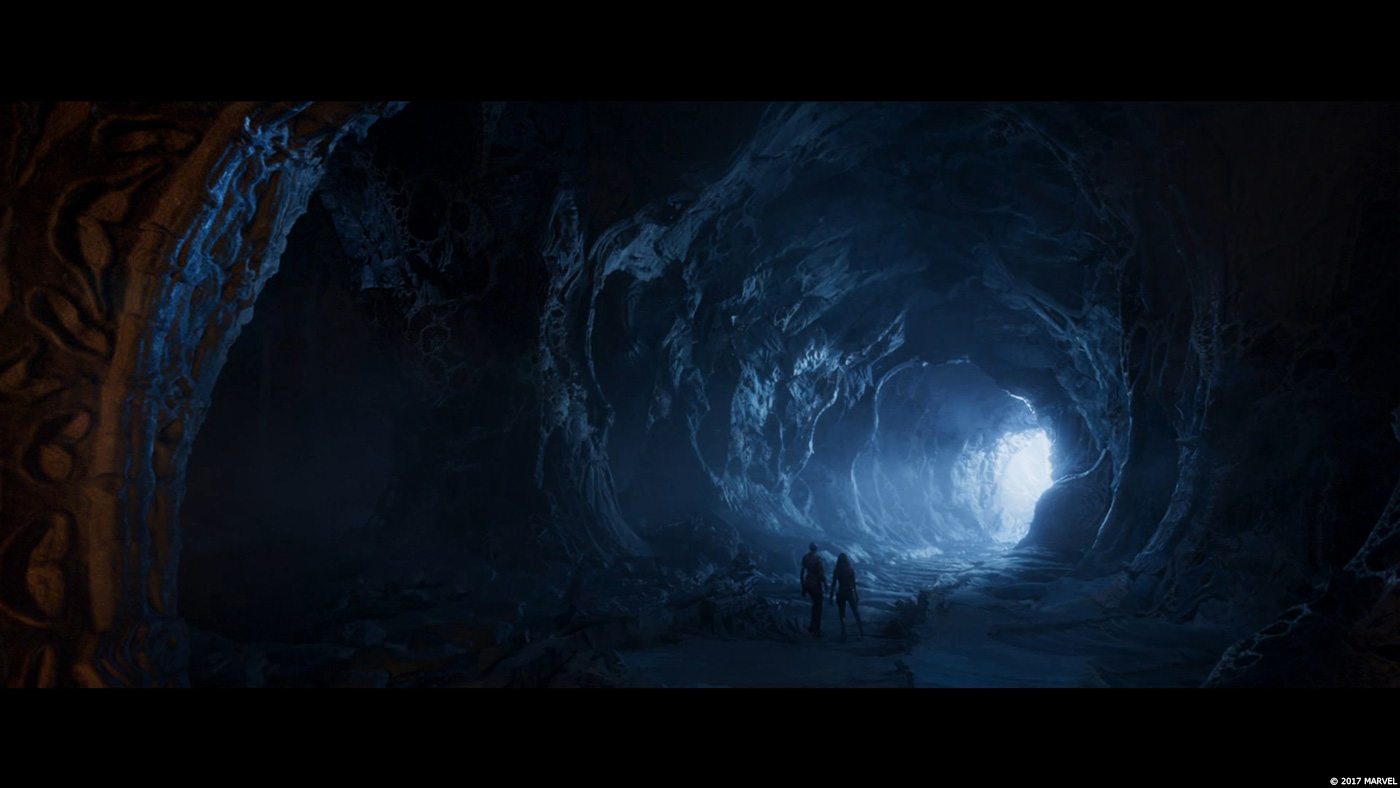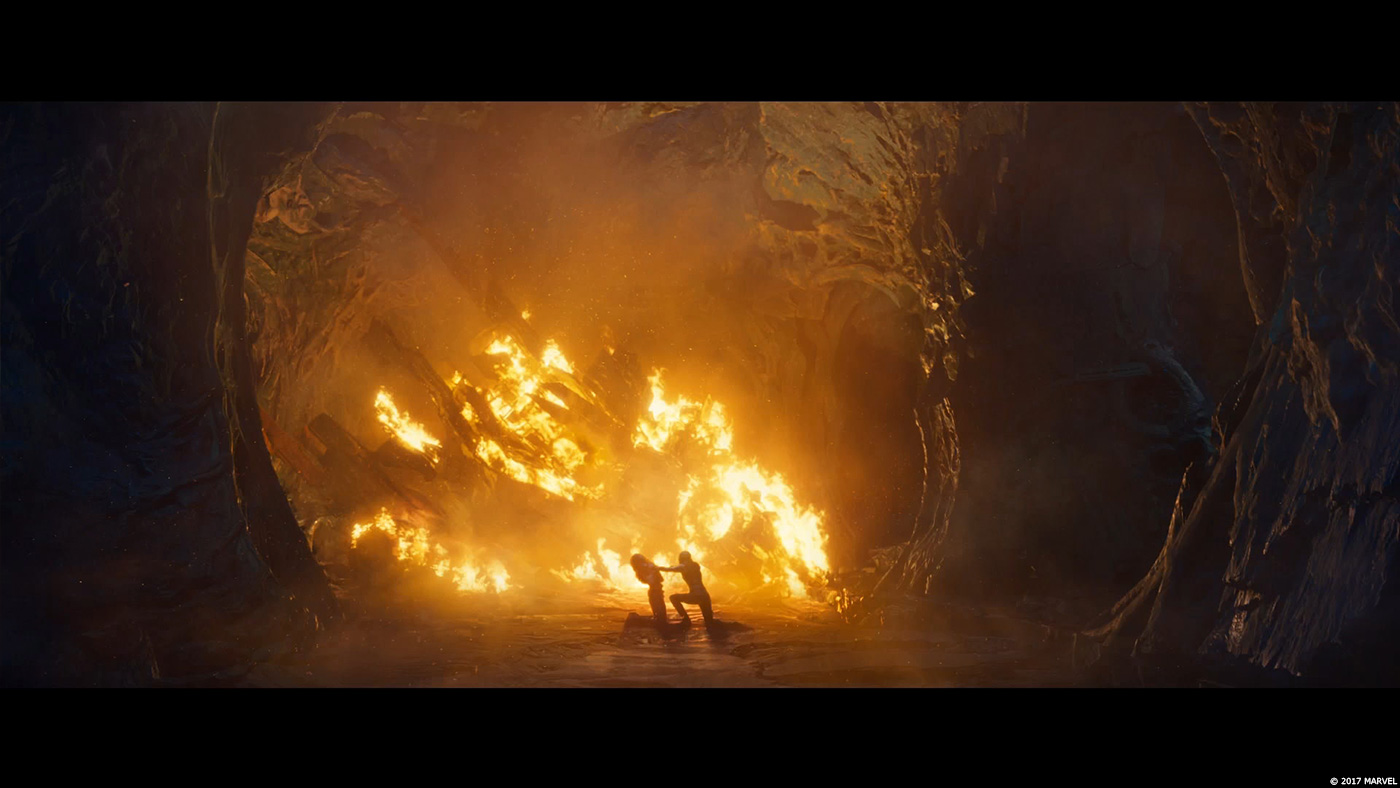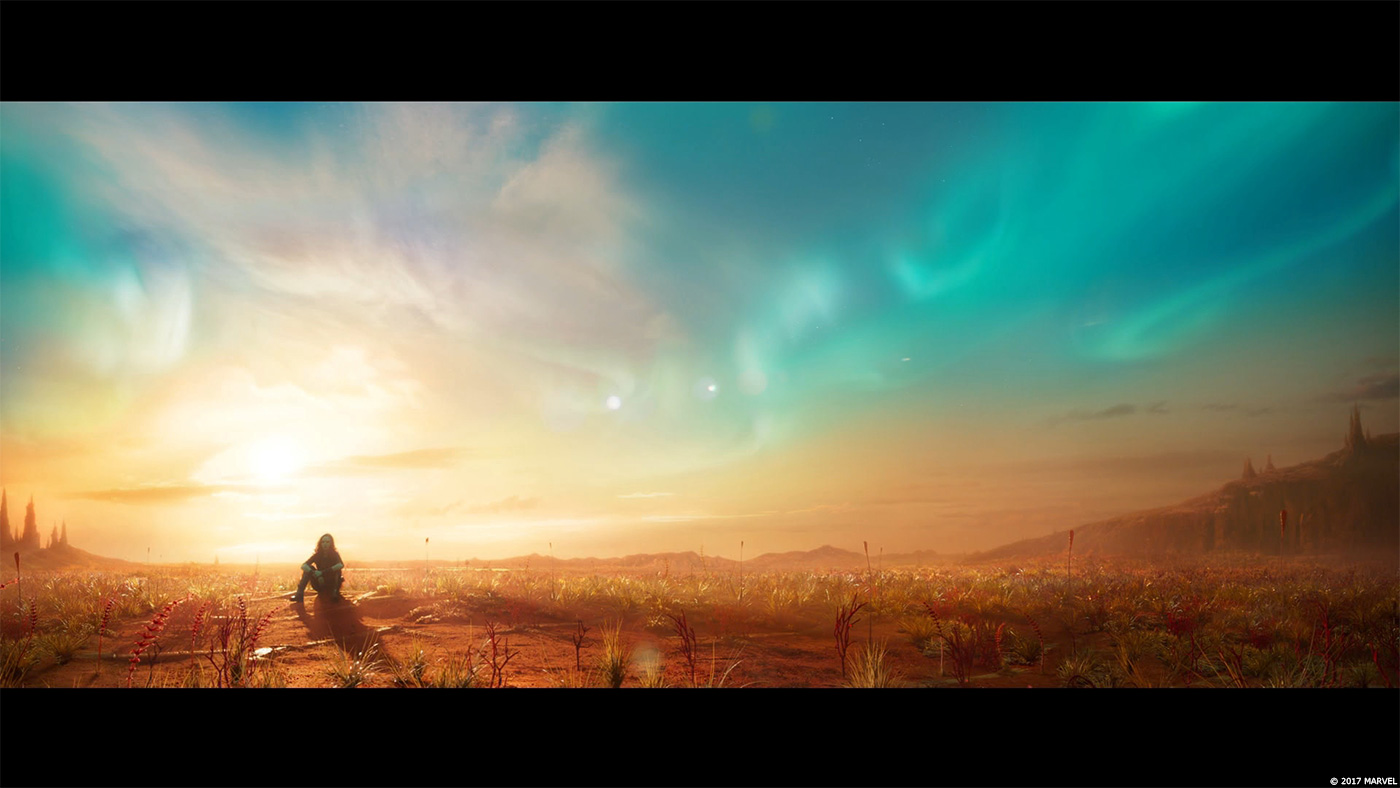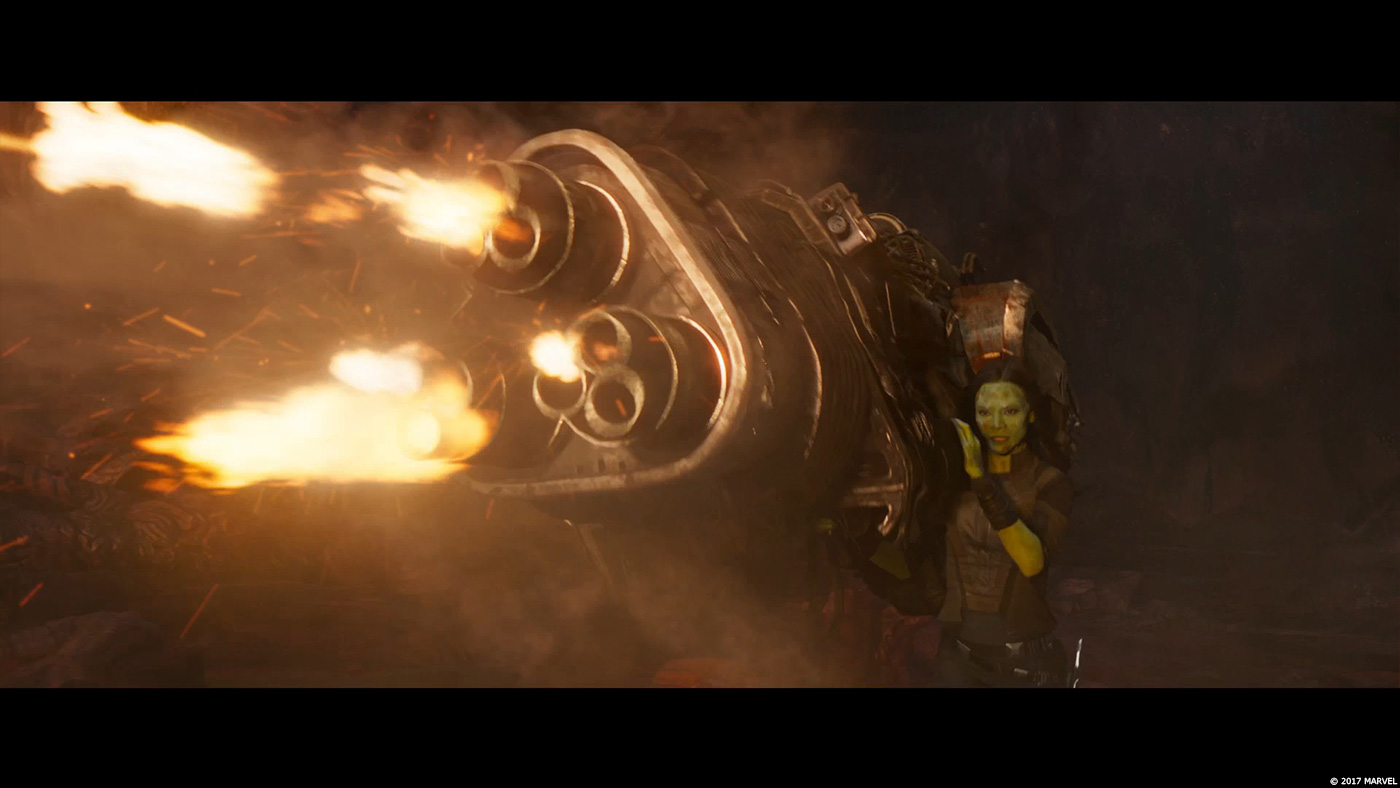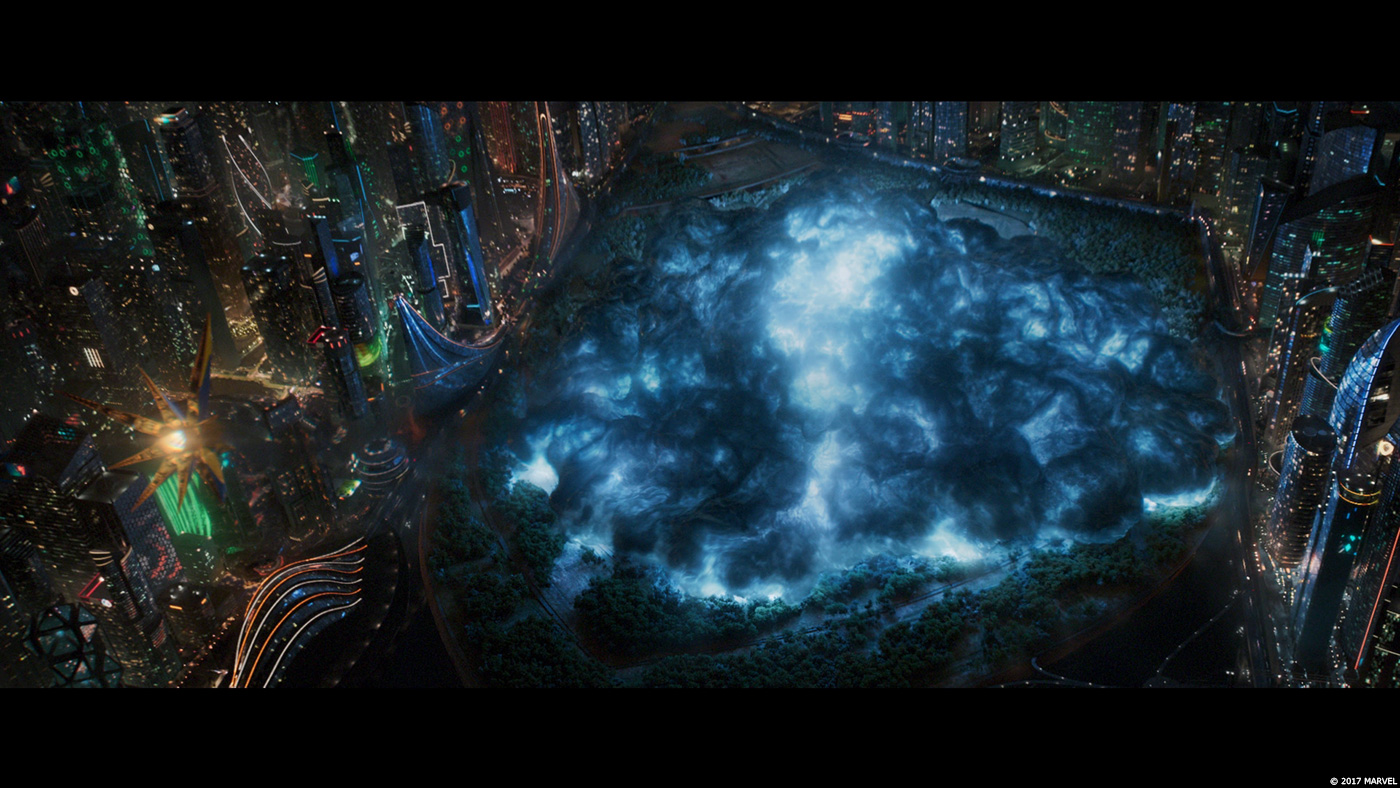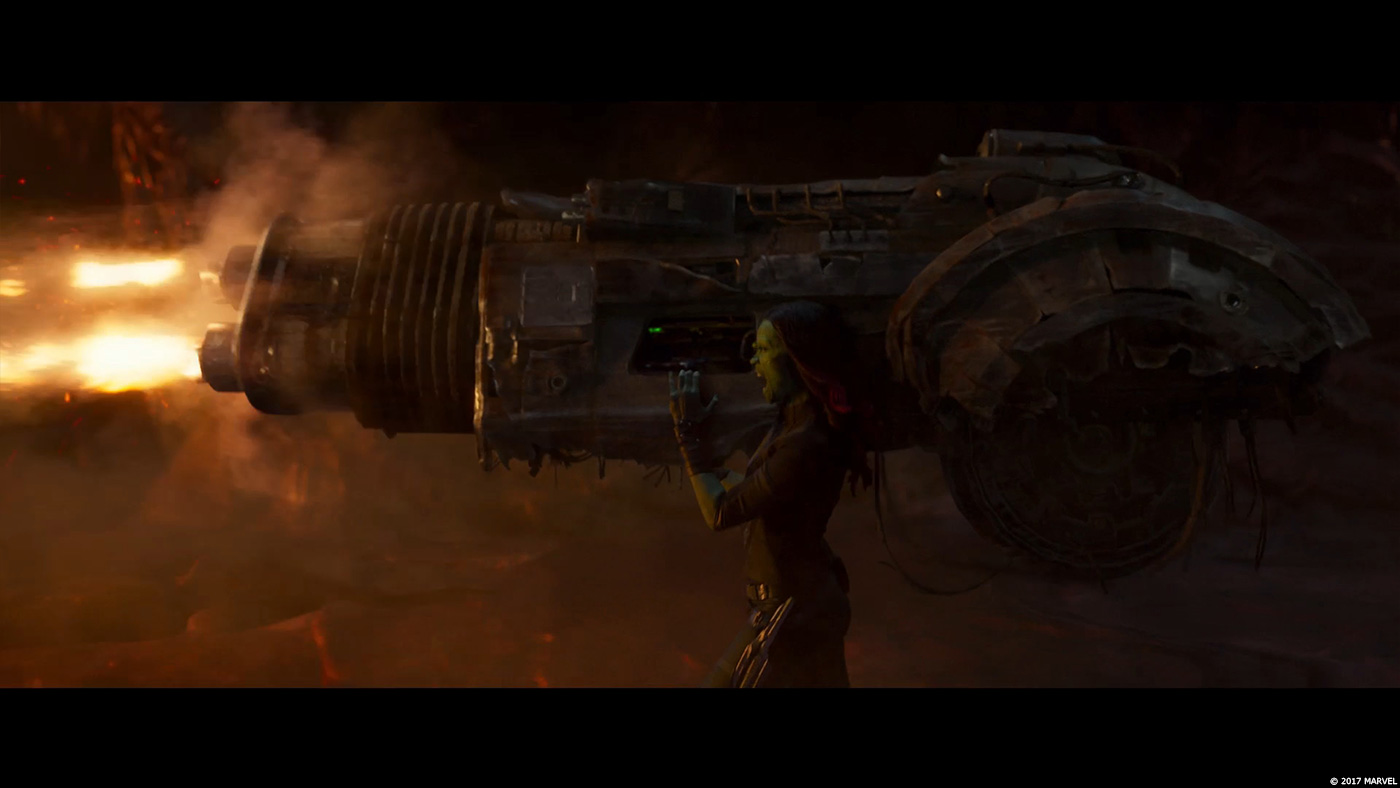In October 2016, Jelmer Boskma told us about the work of Scanline VFX on MISS PEREGRINE’S HOME FOR PECULIAR CHILDREN. He speaks to us today about his return to the Marvel universe.
How did you and Scanline VFX get involved on this show?
Scanline has been heavily involved with Marvel projects in the past, delivering visual effects for CAPTAIN AMERICA: THE WINTER SOLDIER, IRON MAN 3 and THE AVENGERS. Even though it was a first time for me personally supervising a project for them, they had worked closely with my producer Bobby Evans. We had a brief series of meetings with the production team at the studio, which was great to get to know everybody. Shortly after we were given the green-light to start work on our sequences.
How was the collaboration with director James Gunn?
James is a very expressive extroverted guy who speaks his mind in an unmistakably clear manner. Even though the film called for some rather abstract visuals, he had a pretty clear idea about the look for the majority of elements in his movie. We had some figuring out to do with regards to the design and look of certain environments, but his positive way of communicating, directly or through his production side VFX team, made it a really enjoyable creative journey.
What was his approach and expectations about the visual effects?
The first GUARDIANS OF THE GALAXY was, in my opinion, unique compared to the rest of the Marvel canon, primarily in its highly creative design and unapologetic use of vibrant color schemes. The sequel was no different in it’s ambition to showcase lavish polished imagery, staying faithful to the brightly colored universe featured in the first instalment. GUARDIANS OF THE GALAXY VOL. 2 features a total of 2314 visual effects shots, which is 98% of the movie. It’s a monumental task for one person to wrap their head around all the different creative challenges a shot-count like this presents. To help James realize the visual effects, he received the aide of the executive staff at Marvel studios as well as VFX supervisors, Chris Townsend and Edwin Rivera, who we had our day-to-day contact with during post production.
What are the sequences made by Scanline VFX?
We did the North by Northwest sequence on Ego’s planet, including the shots within the twisting caverns. The cosmic flesh (blob) expansion montage shots both on earth as well as on various alien planets and the shots featuring the mysterious alien sprout in the opening sequence of the movie.
How did you organize the work at Scanline VFX?
The grand majority of work was done by the team at our facility in Vancouver, with some additional work realized by our Los Angeles and Munich offices.
Can you explain in detail about the creation of the mysterious sprout?
Sure! When we shot the opening sequence, months prior to starting the VFX work, James let it shimmer through that he was not a hundred percent sure about the physical prop used on set. The design was cool, but a little disconnected from something that would eventually have to tie in with the larger expansion effect. We went through a design phase where we presented a wide variety of alien plant ideas to try and bridge this gap. This was a tricky design to get right, because we had not finalized the look of the expansion effect itself yet. A bit of a ‘chicken or the egg’ situation, but in the end we found something James liked and moved forward with. The build was pretty straight forward but meticulous, as we knew the sprout would have to hold up in extreme close ups. A combination of hand crafted sculpted forms and procedurally generated microscopic surface detail is what ended up in the final asset.
The camera moves inside the spout. How did you approach and create this shot?
Once our camera is inside one of the veins of the sprout, it’s pretty much a different shot. Sort of like the video footage of an endoscopy, which was our main source of inspiration. Fun reference to look at… yikes! I have to give a big shout out here to my CG supervisor Randy Ui who ended up building the interior portion of the shot himself, within the constraints of an extremely tight schedule. Partly because of the detail required on the sprout, right before we enter through one of its ‘skin-pores’ and partly because of the design being finalized pretty late in the game, this was literally our single last shot to finish.
Gamora is attacked by her sister Nebula on Ego’s planet. How did you created Nebula’s ship?
Nebula flies one of the ravager M-Ships, which were featured in the first movie. We received the model asset from production and ended up doing a once-over on the textures and look-dev to ensure its details would hold up as close as they needed to for our shots. The unique patterns, color scheme, and material choices for Nebula’s M-Ship were designed by us for this sequel specifically. We ended up with about 4 versions of the M-Ship all featuring more extreme degrees of damage and destruction. These variations were all handcrafted and based on the continuation of the destructive events happening within the sequence. We paid special attention to the detail and look of the windshield of the ship, as we knew the camera would be right on top of it in a couple of shots. A lot of the look for that was done by our compositing team, lead by Sonja Burchard. A combination of subtle refractive details, scratches, cracks, scuffs and sand grains made the glass sit in the frame beautifully. They are some of my favorite shots, as the original plates were shot without any glass or exterior M-ship present, yet I totally believe our CG ship and glass when I look at the finished shots.
Can you explain in detail about the creation of the Ego’s planet?
I think detail is the key word in your question, as that was the biggest challenge for us on Ego’s planet. The idea behind this living planet was incredibly abstract. Much of the shape and design language that was explored by the art department was a combination of intricate mandelbulb shapes and organic vegetation. A mandelbulb is a three-dimensional visual extrapolation of one, or a series of mathematician Benoit Mandelbrot’s fractal equations. The shapes and forms composing a mandelbulb are incredibly complex, otherworldly, yet aesthetically very pleasant due to their mathematical patterning. Production brought on conceptual artist Hal Tenny as one of the main forces to help inspire the art department and visual effects teams with the design language for Ego’s planet. Utilizing the open-source software Mandelbulb 3D, our pipeline team was able to write tools to help us extract Hal’s mandelbulb creations into usable 3D data, which we could import into Maya and Zbrush as ‘building blocks’ for this world’s terrain. This is how we created the environments of the cave Nebula crashes into. The look of our exterior shots was conceived by combining colorful matte paintings done by our matte painting supervisor Yvonne Muinde with vast arrays of CG vegetation, realized by senior digital artist Chris Pember. Because of the vastness of the environment, it was not practical to construct them as large physical sets, which made our set extension work comprise up to 90% of the screen space in the majority of our shots.
Many FX and destructions happens during this sequence. How did you manage this aspect?
Thankfully I had a wonderful FX lead on this project, Ivan Prvulj. The destruction of the planet’s soil and structures was done through Thinking Particles with impact explosions and incendiary fire simulated in Flowline rendered in VRay. A key point here was to have the impact hits help tell the viewers where the M-ship was in space, as it’s often firing at Gamora off screen. For shots with many explosions and impacts happening at the same time, we ended up separating the elements and providing comp with deep passes to ensure we had as much control as possible. James was pretty specific about the timing, placement, and size of the impacts. Mostly referring back to Zoe Saldana’s performance as Gamora running for her life, which dictated most of the timing.
Can you explain in detail about the beginning of the J’son Expansion?
The expansion, or as we have called it, ‘the Blob’, was one of our biggest challenges on the film. Primarily because no one really knew what this thing should look like. It’s literally an alien concept, which was almost impossible to capture within a painted still concept image, as its animation and behavior is so tied in with its look and shape. The field was pretty much wide open for what this thing could be. This led us to months of exploration and RnD to get a look and workflow pinned down. For the final look we settled on a unique Flowline based simulation driven by underlying keyframe animated polygonal meshes. Senior Flowline artist Justin Mitchell engineered and developed the Flowline tech behind the look of the Blob and was the driving force during our RnD phase. Senior compositor Cameron Thomas, established the final look of the Blob in our shots by combining all our CG and simulated elements inside Nuke. Besides the simulated exterior surface of the Blob, there’s an undulating internal network of lightning and energy following the exact shape and position of the Blob. As much as we were able to streamline the process, the Blob ended up being an extremely complex undertaking requiring a high level of involvement from all our departments.
Which references and indications did you received for this expansion?
In the Previs scenes the Blob was represented essentially as a ball of lightning with tentacles, representing Ego’s energy. It was important to make sure a connection was perceivable between the Blob and the other manifestations of Ego’s energy in various other scenes throughout the film. That’s about as far as a briefing we received when we started our work on this.
Which sequence was the most complicated to create and why?
Each sequence came with its own set of challenges, both technically and creatively. But the complexity and abstract nature of the look of the Blob made the shots in which it is featured probably the most complicated to get looking right.
Was there a shot or a sequence that prevented you from sleep?
I don’t think it will come as a surprise if I mention the expansion sequences here again. The Blob was a tricky beast and for the longest time did not have a final look set. I didn’t lose any sleep over it because I had confidence we would nail it, but it was a challenging concept to bring to life.
What is your best memory on this show?
Seeing the work come together is always the most rewarding aspect of a project for me. There have been many nice moments, whether it was seeing the sequences taking shape for the first time in their rougher temp form, or getting a design or look approved by the studio. James has been extremely kind and appreciative about our work as we went through this project with him. Seeing a director genuinely excited and happy with the work you’ve been doing for his film is wonderful and will be a fond memory for myself.
How long have you worked on this show?
Almost exactly a year.
What was the size of your team?
About 120 people. Including all artists, technicians, production, and supporting facility staff.
What is your next project?
I am afraid it’s a bit too early for me to say that right now.
A big thanks for your time.
// WANT TO KNOW MORE?
Scanline VFX: Official website of Scanline VFX.
© Vincent Frei – The Art of VFX – 2017

